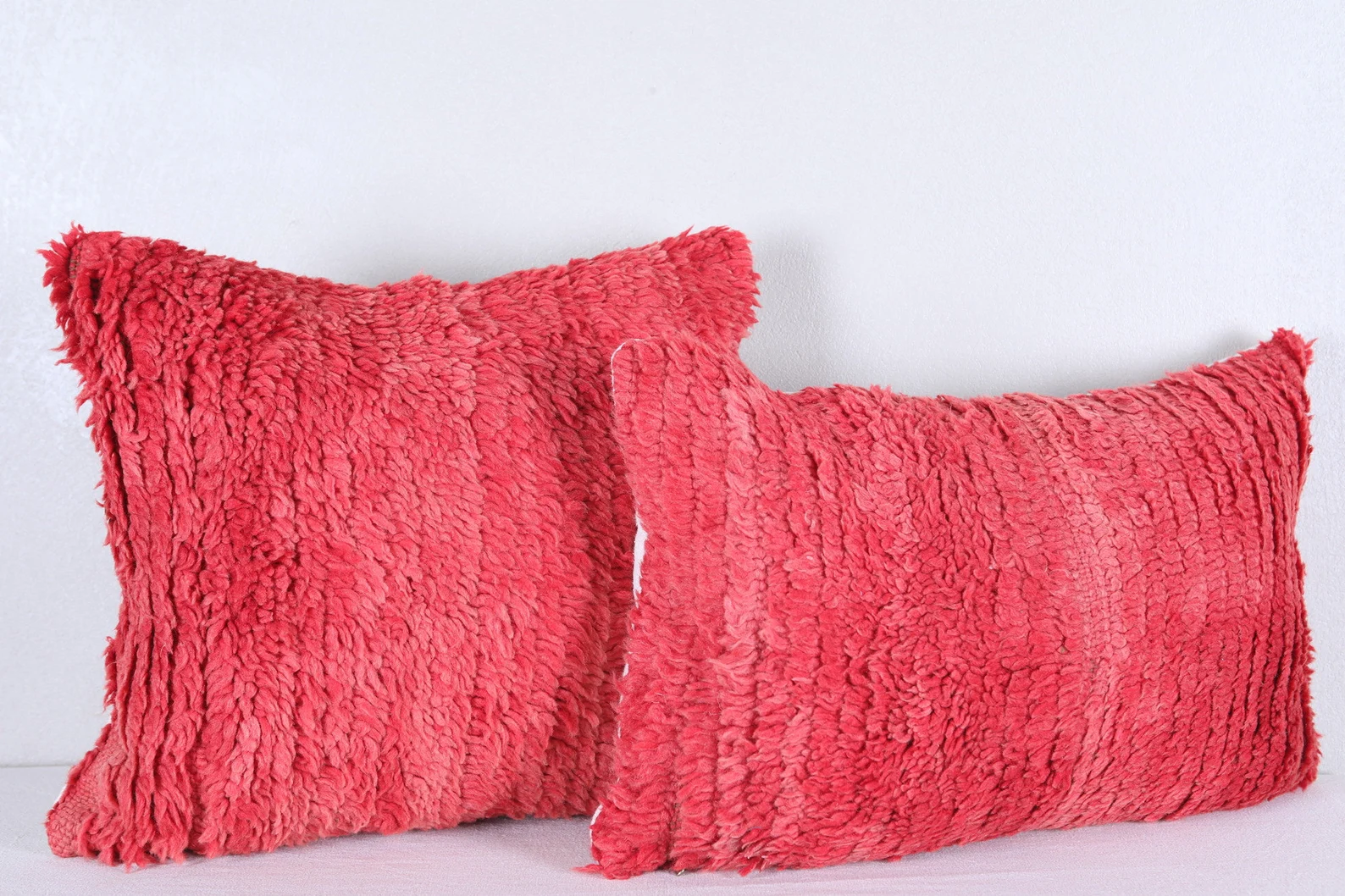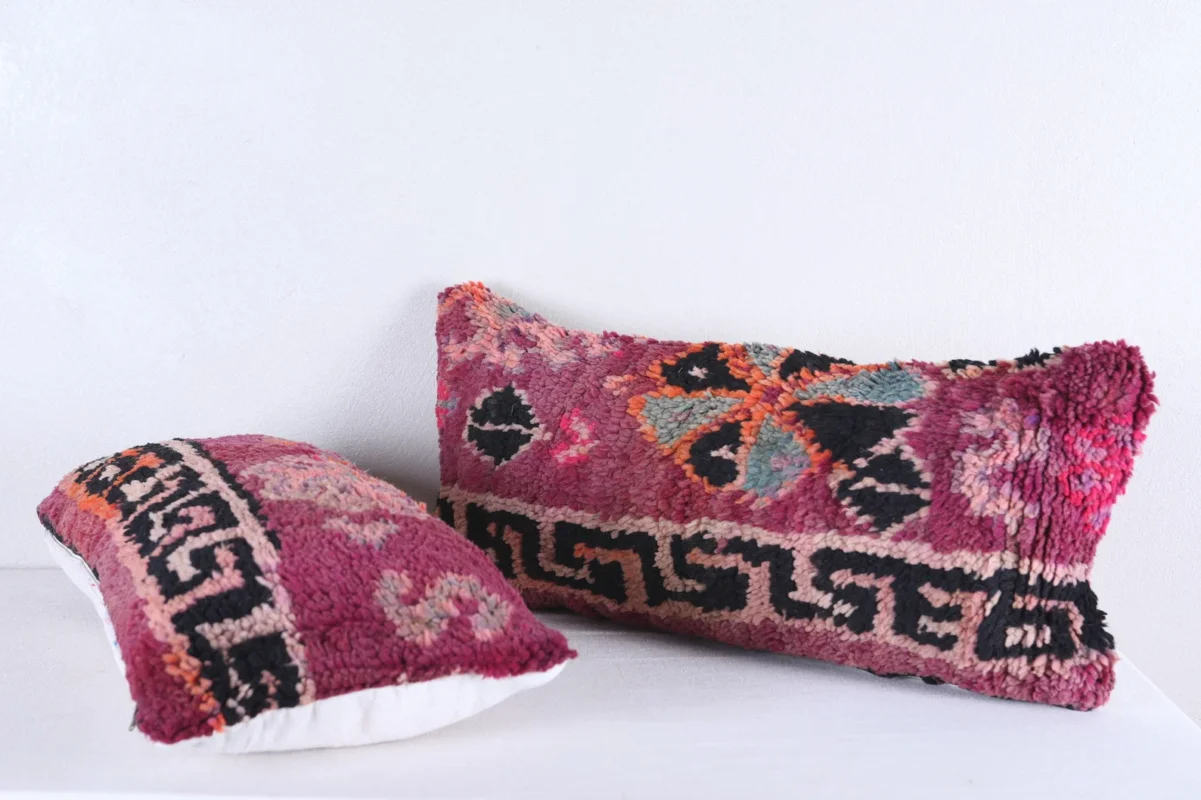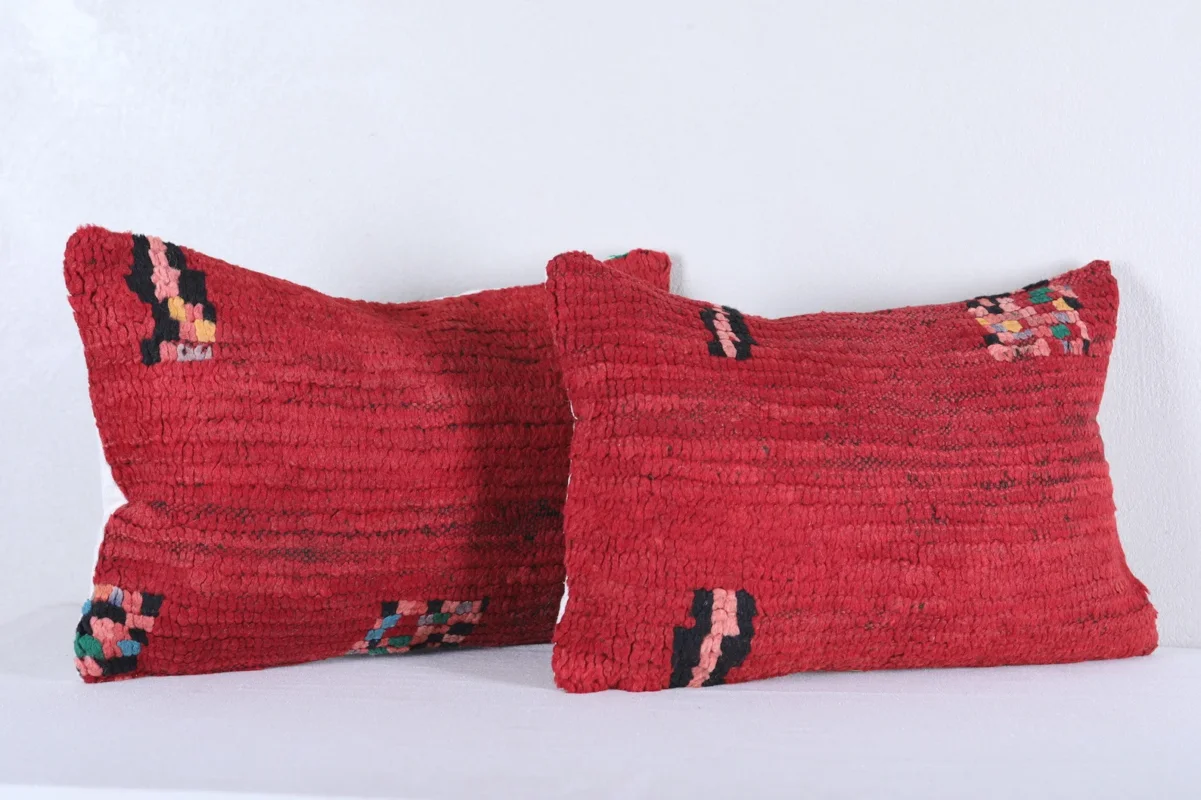Introduction to Moroccan Pillows
Moroccan pillows, with their intricate designs and vibrant colors, have carved a unique niche in the realm of home decor. Characterized by their exceptional craftsmanship, these pillows stand as exquisite exemplars of Moroccan decor, combining aesthetic allure with cultural depth. Deeply rooted in the rich history and traditions of Morocco, these pillows are not merely decorative items but also embodiments of the country’s artistic heritage and artisanal expertise.
The art of creating Moroccan pillows is often a family affair, passed down through generations. Skilled artisans meticulously handcraft each piece, employing traditional weaving techniques and using high-quality materials such as wool, cotton, and silk. The incorporation of geometric patterns, bold hues, and intricate embroidery reflects the diversity and dynamism of Moroccan culture. Each pillow tells a story, capturing the essence of Moroccan aesthetics and bringing a touch of its vibrant heritage into homes worldwide.
Materials such as natural dyes and organic fibers play a crucial role in the distinctiveness of Moroccan pillows. These elements not only ensure durability but also contribute to the eco-friendly nature of these decorative items. The versatility and unique appeal of Moroccan pillows make them a favorite among interior design enthusiasts, who often use them to add a touch of exotic sophistication to various spaces.
The rising popularity of Moroccan pillows can be attributed to their ability to seamlessly blend with contemporary and traditional decor styles. They offer a perfect balance between functionality and ornamentation, making them ideal for any room. Whether it’s a living room seeking a splash of color or a bedroom in need of a cozy accent, Moroccan pillows provide a stylish solution. Their growing appeal underscores a broader trend toward cultural appreciation and the global adaptation of diverse design elements.
Variety of Designs and Patterns
Moroccan pillows are renowned for their exquisite range of designs and patterns, each offering a unique blend of artistry and cultural heritage. The vibrant colors and geometric shapes found on these pillows create a striking visual appeal, perfect for adding a touch of exotic elegance to any room. As you explore the diversity in design, you’ll find that Moroccan pillows effortlessly complement various interior styles, from contemporary spaces to more traditional settings.
Among the most celebrated designs are the kilim, boujad, and boucherouite patterns. Kilim pillows, for instance, are distinct for their flat-woven technique and often feature bold, geometric shapes such as diamonds and triangles. Originating from the Berber tribes of Morocco, these patterns not only reflect a rich history but also convey symbolic meanings, such as protection, fertility, and the harmony between humans and nature.
Boujad pillows, on the other hand, are characterized by their colorful, abstract designs. These patterns are traditionally crafted by Berber women from the Haouz region in Morocco. The beauty of boujad pillows lies in their improvisational nature, with each piece telling a different story through its spontaneous use of color and form. This makes them a fitting choice for eclectic or bohemian-style interiors, where unpredictability and artistic flair are highly valued.
Another enchanting option is the boucherouite design, which utilizes recycled fabric scraps to create vibrant and tactile patterns. These pillows are a testament to Moroccan artisans’ creativity and resilience, as they transform discarded materials into beautiful, one-of-a-kind pieces. The boucherouite design typically features a mix of irregular shapes and spontaneous color combinations, making it an ideal centerpiece for modern and sustainable living spaces.
The vast array of designs and patterns available in Moroccan pillows ensures there is a perfect match for every home decor style. Whether you lean towards minimalism, eclectic, or a classic aesthetic, these pillows offer a versatile and timeless appeal, making them a cherished addition to any home.
Materials and Craftsmanship
Moroccan pillows are renowned for their exceptional craftsmanship and the high-quality materials used in their creation. Predominantly, these pillows are fashioned from luxurious fabrics such as wool, cotton, and silk. Each of these materials contributes uniquely to the texture, durability, and aesthetic appeal of Moroccan pillows. Wool, known for its warmth and resilience, makes these pillows ideal for cozy, comfortable settings. Cotton, being soft and breathable, offers versatility and ease of maintenance, while silk brings a touch of opulence and sophistication to any room.
The true allure of Moroccan pillows, however, lies in the traditional techniques and meticulous craftsmanship employed by Moroccan artisans. Hand-weaving is a cornerstone of Moroccan textile art. This method, often passed down through generations, involves the intricate interlacing of threads to create complex and beautiful patterns. Each woven design tells a story, reflecting cultural heritage and artisanal skill. Additionally, Moroccan pillows often feature exquisite embroidery, where detailed motifs are stitched onto the fabric, adding layers of texture and dimension.
The blend of high-quality materials with time-honored craftsmanship results in Moroccan pillows that are not only aesthetically pleasing but also durable and unique. The hand-weaving technique, coupled with the dedication and precision of the artisans, ensures that no two pillows are exactly alike. This individuality makes each Moroccan pillow a distinctive piece of home decor. Whether displayed on a sofa, bed, or chair, they introduce warmth, character, and a touch of exotic elegance to the space.
By incorporating these exquisite Moroccan pillows into your home, you bring in a piece of art that exemplifies extraordinary craftsmanship and rich cultural tradition. The skilled labor, combined with high-grade materials like wool, cotton, and silk, ensures that these pillows remain cherished elements of your decor for years to come.
Incorporating Moroccan Pillows into Modern Spaces
Integrating Moroccan pillows into modern décor is a seamless way to infuse a touch of global charm into your living spaces. These pillows, characterized by their rich colors, intricate patterns, and luxurious textures, effortlessly adapt to various settings within the home, from living rooms to bedrooms to outdoor areas.
In the living room, Moroccan pillows can serve as vibrant focal points on a neutral or minimalist sofa. Mix and match different sizes and patterns to create a layered, eclectic look. Opt for pillows with geometric patterns to complement contemporary furniture, or go for those with bold, traditional motifs to introduce an element of contrast. Position them against a backdrop of solid-colored throws or neutral cushions to let the intricate designs stand out.
In bedrooms, Moroccan pillows can enhance your bedding ensemble. Layering these pillows on your bed brings a sense of depth and richness. Pair them with a plain duvet cover or quilt for a balanced look. Incorporate different textures like velvet, silk, or woven materials to add tactile interest. Additionally, Moroccan pillows can be placed on a window seat or a reading nook to create a cozy, inviting space that beckons relaxation.
For outdoor spaces such as patios or balconies, Moroccan pillows can enliven your seating area. Place them on wicker chairs, benches, or outdoor sofas. Choose vibrant hues and water-resistant fabrics to withstand the elements. By mixing Moroccan pillows with contemporary outdoor furniture, you create a stylish and comfortable ambiance ideal for entertaining guests or lounging in the garden.
The adaptability of Moroccan pillows extends to their compatibility with various decorating styles. Whether your home leans towards modern, bohemian, or eclectic, these pillows can be effortlessly integrated. For a cohesive look, tie in elements such as Moroccan rugs, lanterns, or poufs to echo the patterns and colors of the pillows.
Overall, Moroccan pillows offer endless possibilities for blending traditional craftsmanship with modern design aesthetics. Their versatility ensures that they can complement and enhance any space, adding a unique touch of elegance and charm. Embrace these beautiful handmade accents to create a warm, inviting, and globally-inspired home.
Color Schemes and Themes
Incorporating Moroccan pillows into your home’s decor can dramatically enhance the ambiance, color scheme, and overall theme of a room. Moroccan pillows are renowned for their vibrant hues and intricate designs, making them perfect for adding a touch of exotic elegance. Common color palettes associated with Moroccan pillows include deep rich hues such as royal blue, sunlit yellow, lush green, and fiery red, often accented with gold or silver embroidery. These colors can either complement or provide a striking contrast to your existing decor.
To seamlessly blend Moroccan pillows into your color scheme, consider the dominant colors in your room. For spaces with neutral tones, such as beige or white, Moroccan pillows can offer a pop of color, instantly revitalizing the decor. For rooms already featuring vibrant colors, select pillows that either match or offer a complementary contrast. For example, in a room dominated by blue hues, pillows in orange or gold can create a visually appealing contrast. Conversely, pillows in similar blue shades can enhance and deepen the existing color palette.
Creating themed spaces with Moroccan pillows can transport your home into a realm of cultural richness. A Moroccan-inspired reading nook can be achieved by pairing bold-colored pillows with low seating like poufs or floor cushions, alongside brass lanterns and intricate rugs to evoke the warmth of a Moroccan souk. For a bohemian-style living area, mix and match pillows with different patterns and fabrics. This eclectic approach embraces the free-spirited essence of bohemian design, creating a relaxed yet visually captivating space.
By carefully selecting Moroccan pillows that align with or enhance your desired color schemes and themes, you can effortlessly infuse your home with the charm and allure of Moroccan decor. These versatile and stylish accents not only add beauty but also invite a sense of cultural depth and sophistication into your living spaces.
Caring for Your Moroccan Pillows
Proper care is essential to maintain the vibrant beauty and longevity of your Moroccan pillows, ensuring they continue to add charm and elegance to your home. These handcrafted treasures require special attention due to their unique materials and intricate designs.
When it comes to cleaning Moroccan pillows, it’s important to first identify the materials used. For pillows made from natural fibers such as cotton, wool, or silk, gentle hand washing is recommended. Use a mild detergent and lukewarm water, and avoid excessive scrubbing which can damage the delicate fabrics and intricate patterns. For pillows with leather or suede elements, spot cleaning with a damp cloth and gentle soap is advisable. If uncertain about the material, consulting with a professional cleaner can help prevent unintentional damage.
Regular vacuuming with a soft brush attachment can help to keep your Moroccan pillows free of dust and dirt, ensuring they remain fresh and vibrant. It is imperative to avoid placing them in direct sunlight for extended periods as this can cause colors to fade and fabrics to deteriorate over time. If color fading does occur, fabric-safe dyes can be used for touch-ups, but always test any product on a small, inconspicuous area first.
Storage is another crucial aspect of maintaining Moroccan pillows. When not in use, store them in a cool, dry place, preferably in breathable cotton bags to prevent mold and mildew. Avoid plastic bags as they trap moisture which can lead to fabric damage.
Handling wear and tear over time is another aspect to consider. Inspect your Moroccan pillows periodically for any signs of wear, such as loose threads or fraying edges. Addressing these issues promptly with fabric glue or simple sewing can prevent further damage and prolong the life of your pillows.
In summary. following these care and maintenance tips will help ensure that your Moroccan pillows retain their charm and continue to enhance your home for many years to come. Proper care not only preserves the beauty of these handcrafted items but also honors the artisans who created them.
Where to Find Authentic Moroccan Pillows
Finding authentic Moroccan pillows can be a delightful journey, providing not only an aesthetic upgrade for your home but also an opportunity to support traditional craftsmanship. To ensure you are purchasing genuine items, it’s crucial to know where to look. Reputable online stores are a convenient starting point. Websites like Etsy and Marrakech Shop Design have earned esteemed recognition for their collections of authentic Moroccan textiles. These platforms often showcase items directly sourced from artisans, ensuring high quality and authenticity.
For those preferring a more personalized experience, artisan markets and specialty shops offer an intriguing alternative. Visiting local artisan markets in your own city or while traveling can provide an excellent opportunity to connect directly with the crafters. Specialty shops that focus on global handmade goods usually have a dedicated section for Moroccan décor. Notable examples include Berber Imports and Beldi NYC, where each pillow tells a story of artisanal heritage and tradition.
Supporting fair trade is also paramount when buying Moroccan pillows. Purchasing from vendors who uphold fair trade principles ensures that the artisans crafting these beautiful pieces are fairly compensated for their work. Fair trade-certified stores, identifiable through certifications and customer reviews, provide a trustworthy shopping experience. Brands like Ten Thousand Villages focus exclusively on fair trade practices, allowing you to buy with confidence.
Common pitfalls to avoid include being wary of mass-produced items that often lack the intricate detail and craftsmanship of authentic Moroccan pillows. If the price appears too good to be true, it probably is – authentic Moroccan craftsmanship comes with a reasonable price tag that reflects the labor and skill involved.
In summary, finding authentic Moroccan pillows requires a blend of smart shopping and ethical consideration. By choosing reputable online stores, exploring artisan markets, adhering to fair trade principles, and avoiding mass-produced imitations, you can enjoy the true charm of Moroccan craftsmanship in your home.
DIY Moroccan-Inspired Pillows
For those looking to infuse a touch of Moroccan charm into their home decor, creating your own Moroccan-inspired pillows can be an exciting and rewarding project. This simple DIY project allows you to customize pillows to suit your unique style and decor. Below is a step-by-step guide to making your very own Moroccan-inspired pillows.
First, gather your materials. You will need:
- A standard pillow form or stuffing
- Fabric in vibrant colors and patterns (such as cotton or linen)
- Thread and a sewing needle (or a sewing machine)
- Scissors
- Trim, tassels, or embellishments (optional)
Begin by selecting your fabric. Moroccan design often features bold, vivid colors and intricate patterns. Geometric designs, floral motifs, or paisley patterns can add an authentic Moroccan touch. For an even more personalized look, consider combining different textures and hues.
Once you have chosen your fabric, measure and cut it to match the dimensions of your pillow form, leaving an extra inch around each edge for seam allowance. If you prefer, you can make envelope-style pillow covers, which allow for easy removal and washing. For this style, cut one piece of fabric for the front panel and two smaller pieces for the back that will overlap.
With your fabric pieces ready, place them right sides together and pin them in place. Sew around the edges, leaving an opening to insert the pillow form or stuffing. If you’re using a sewing machine, set it to a straight stitch, and begin sewing about half an inch from the edge. For a hand-sewn option, use a backstitch for durability.
Turn your pillow cover inside out, insert the pillow form or stuffing, and then sew the remaining opening closed. To add an extra Moroccan flair, sew tassels or trim along the edges. These embellishments can elevate the design, giving the pillows a more distinct and luxurious appearance.
By following these simple steps, you can create beautiful, one-of-a-kind Moroccan-inspired pillows that add a unique charm to your home. Experiment with different fabrics and embellishments to seamlessly integrate these pillows into your existing decor.




